Portrait of Herennia Etruscilla (?)
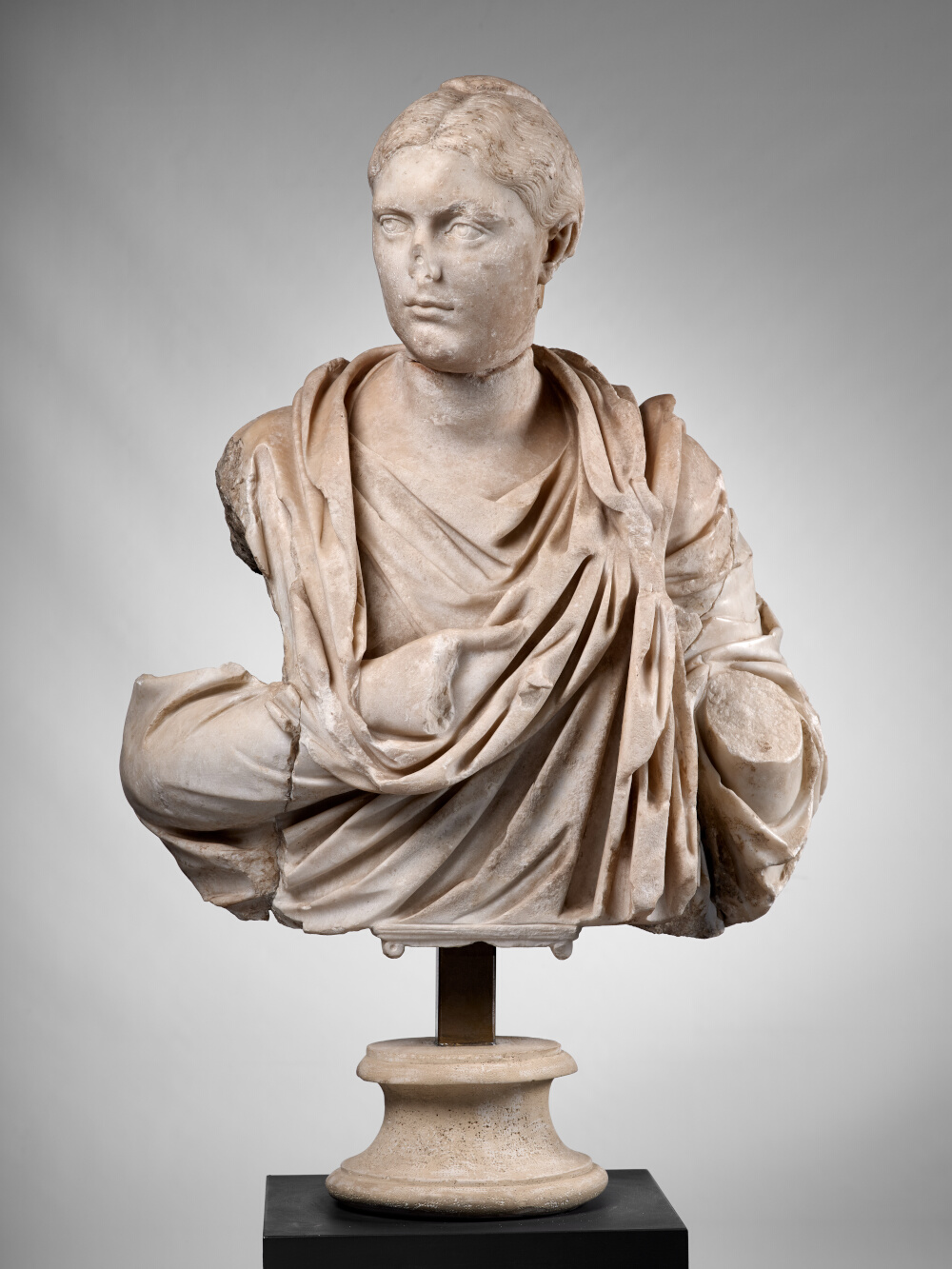
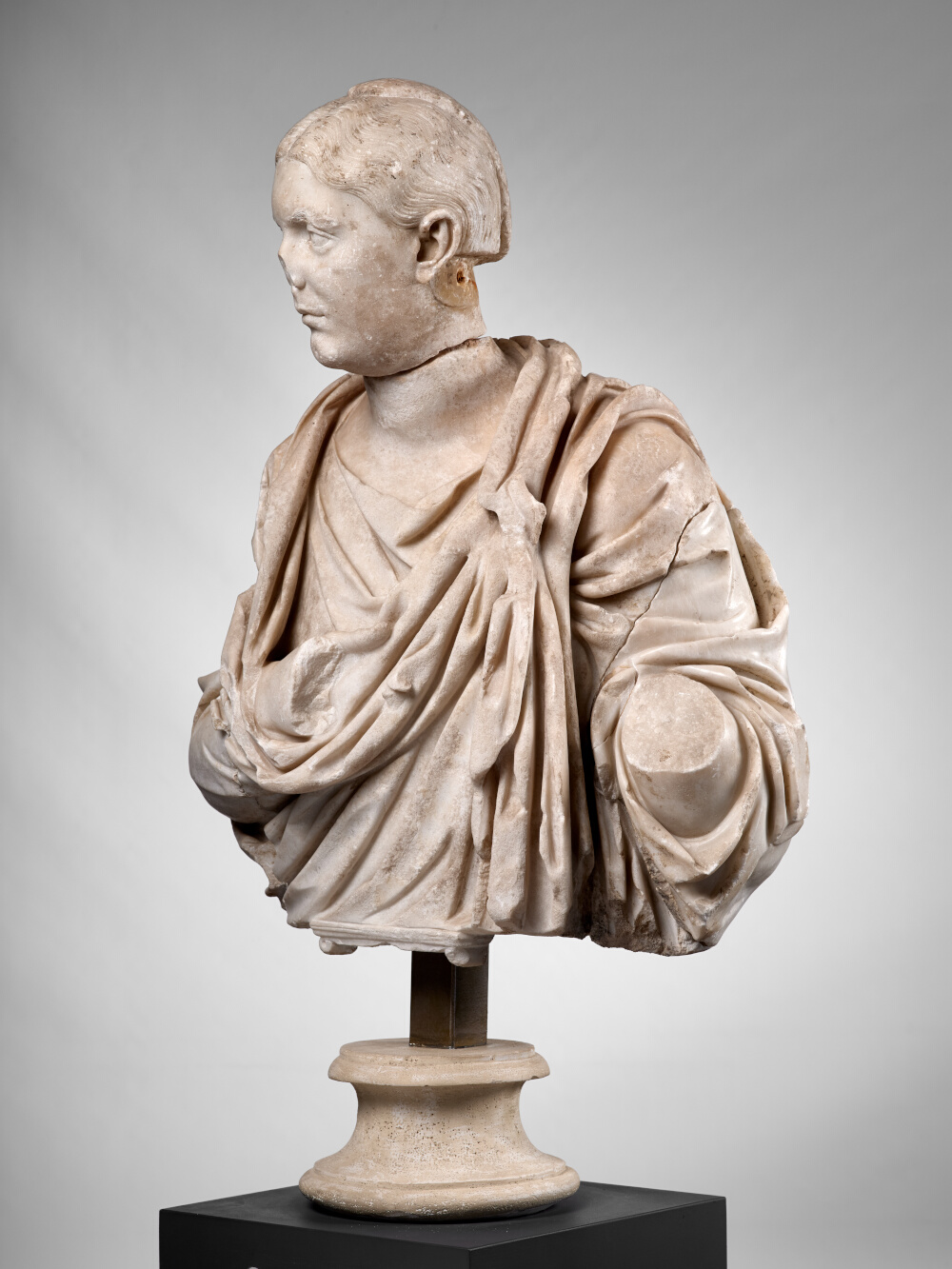
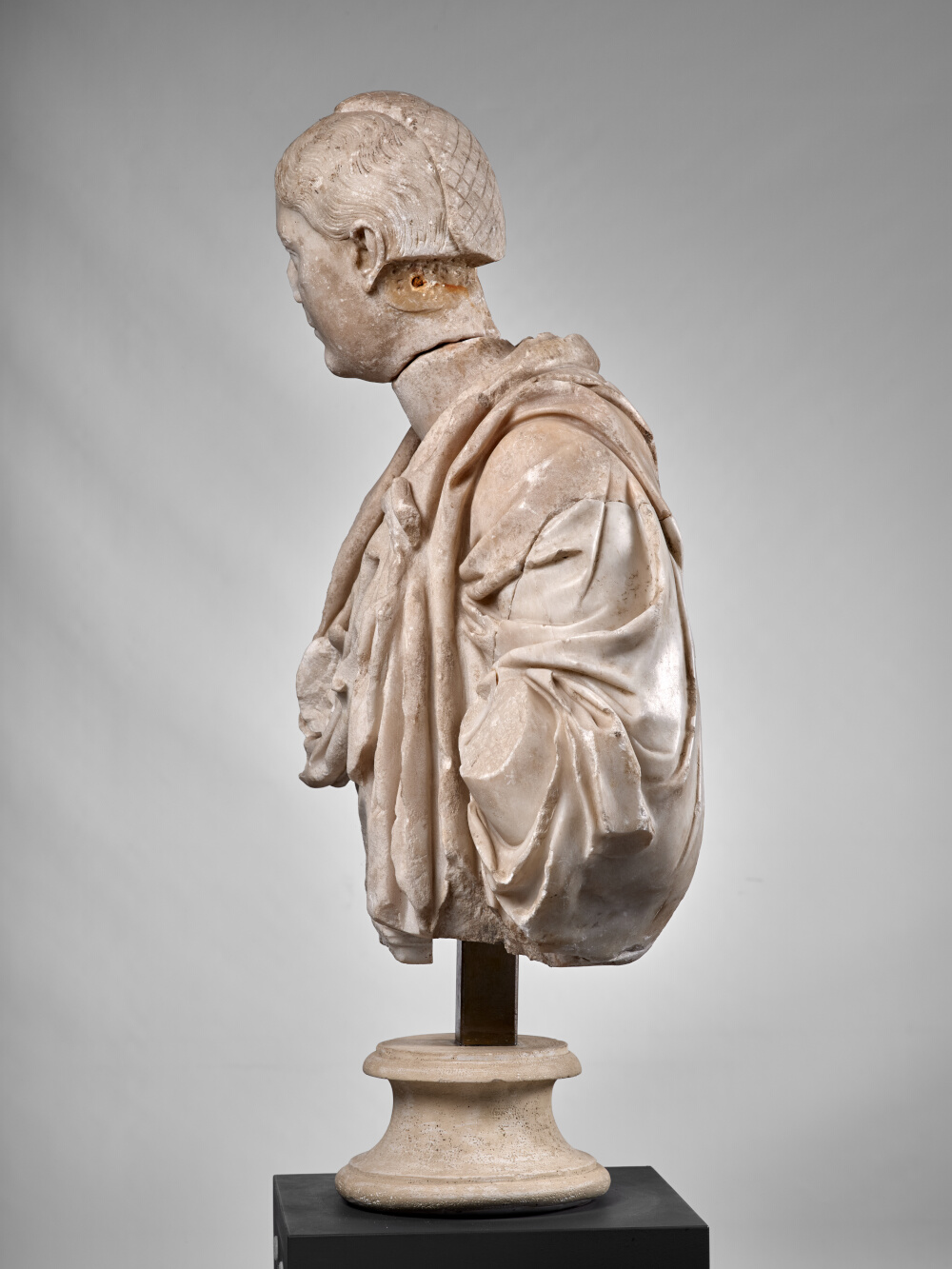
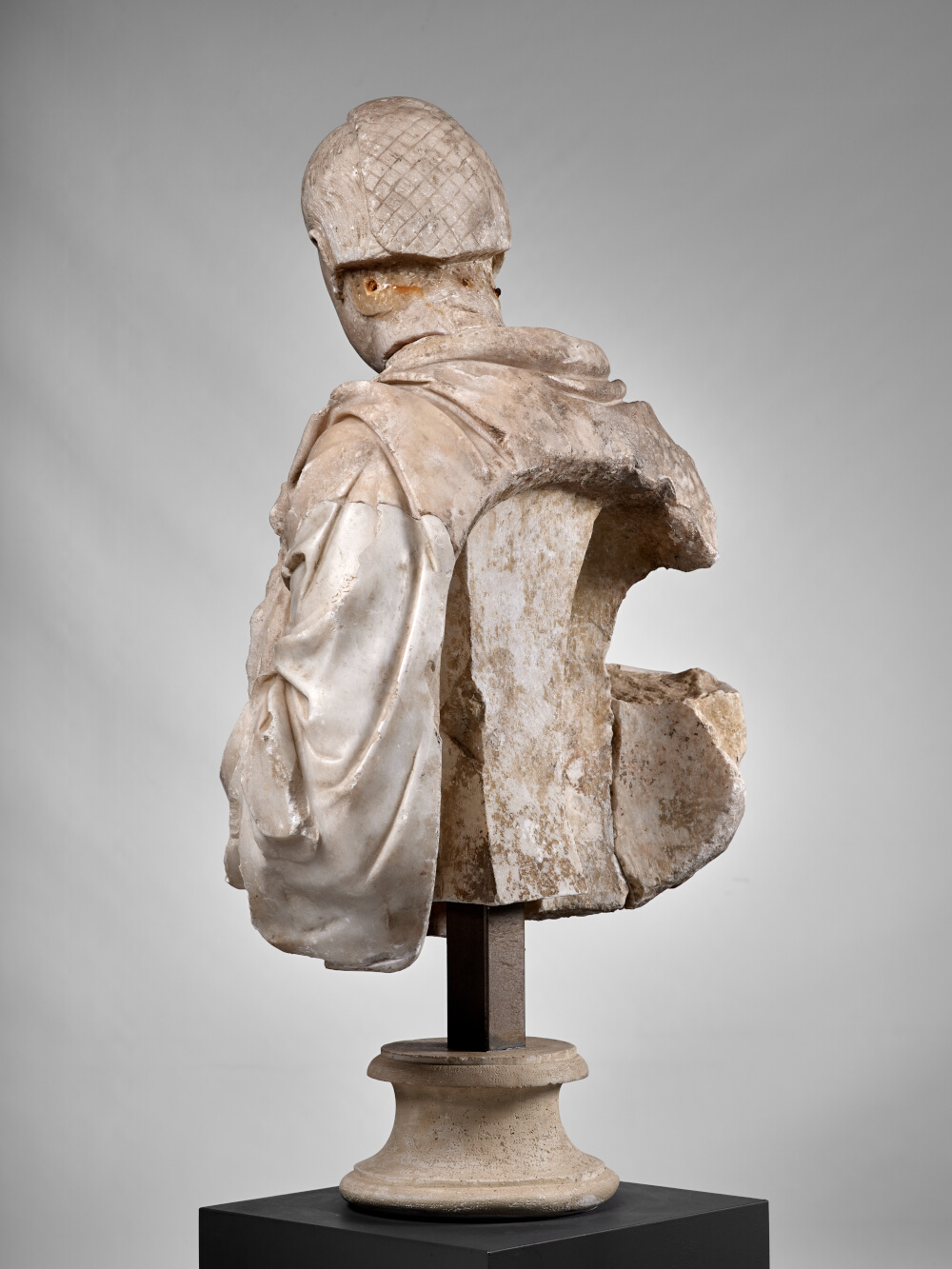
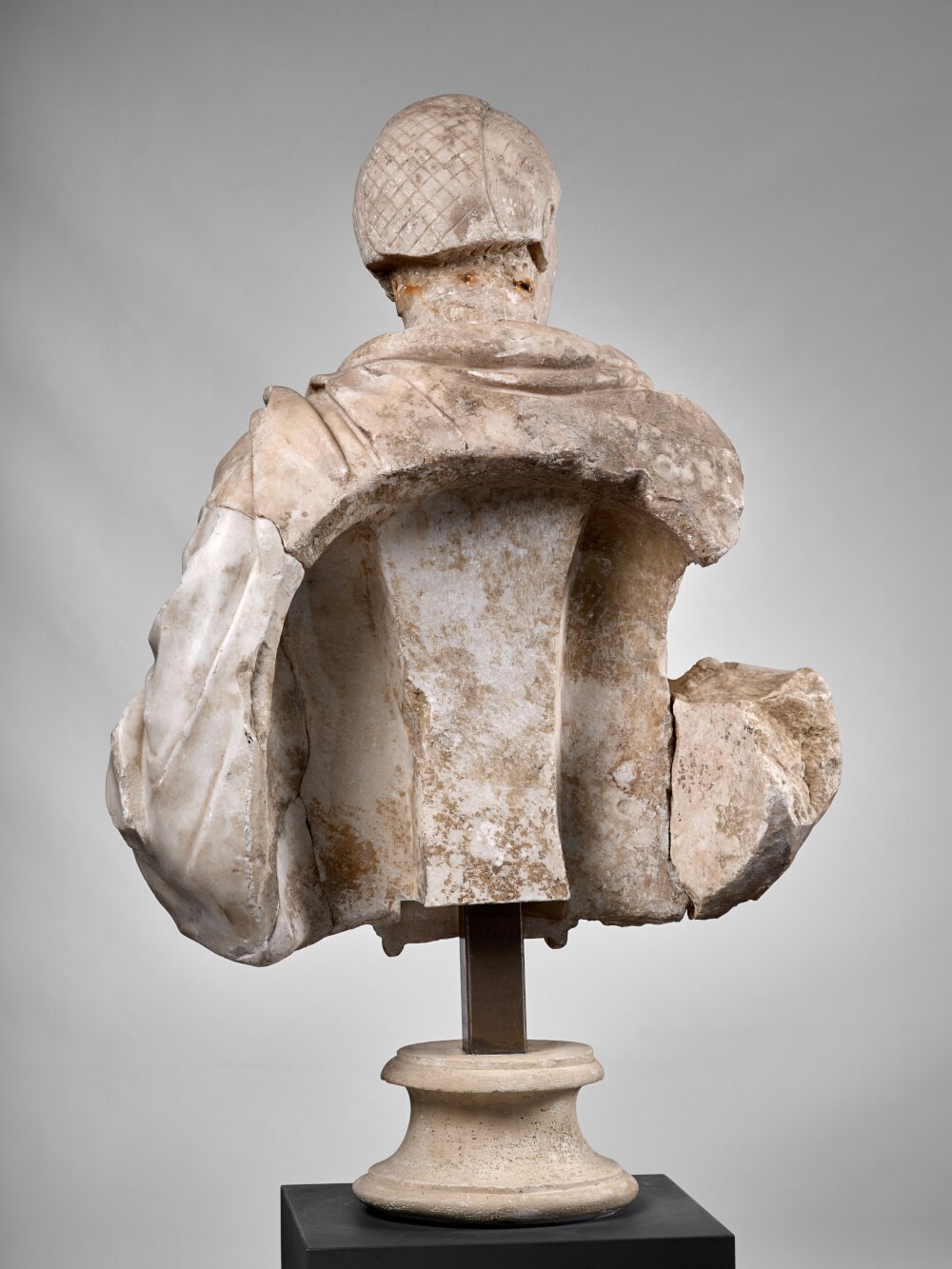
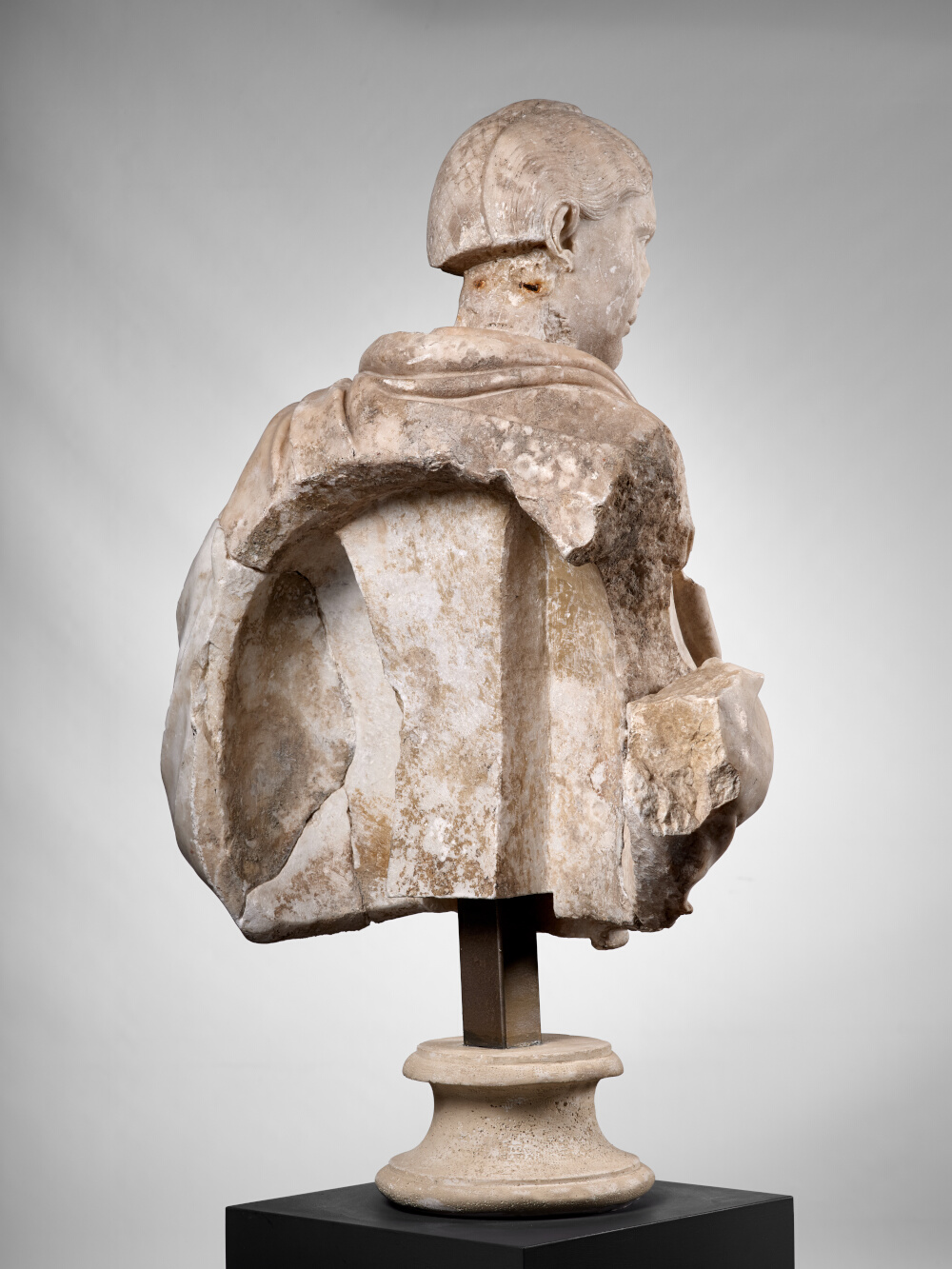
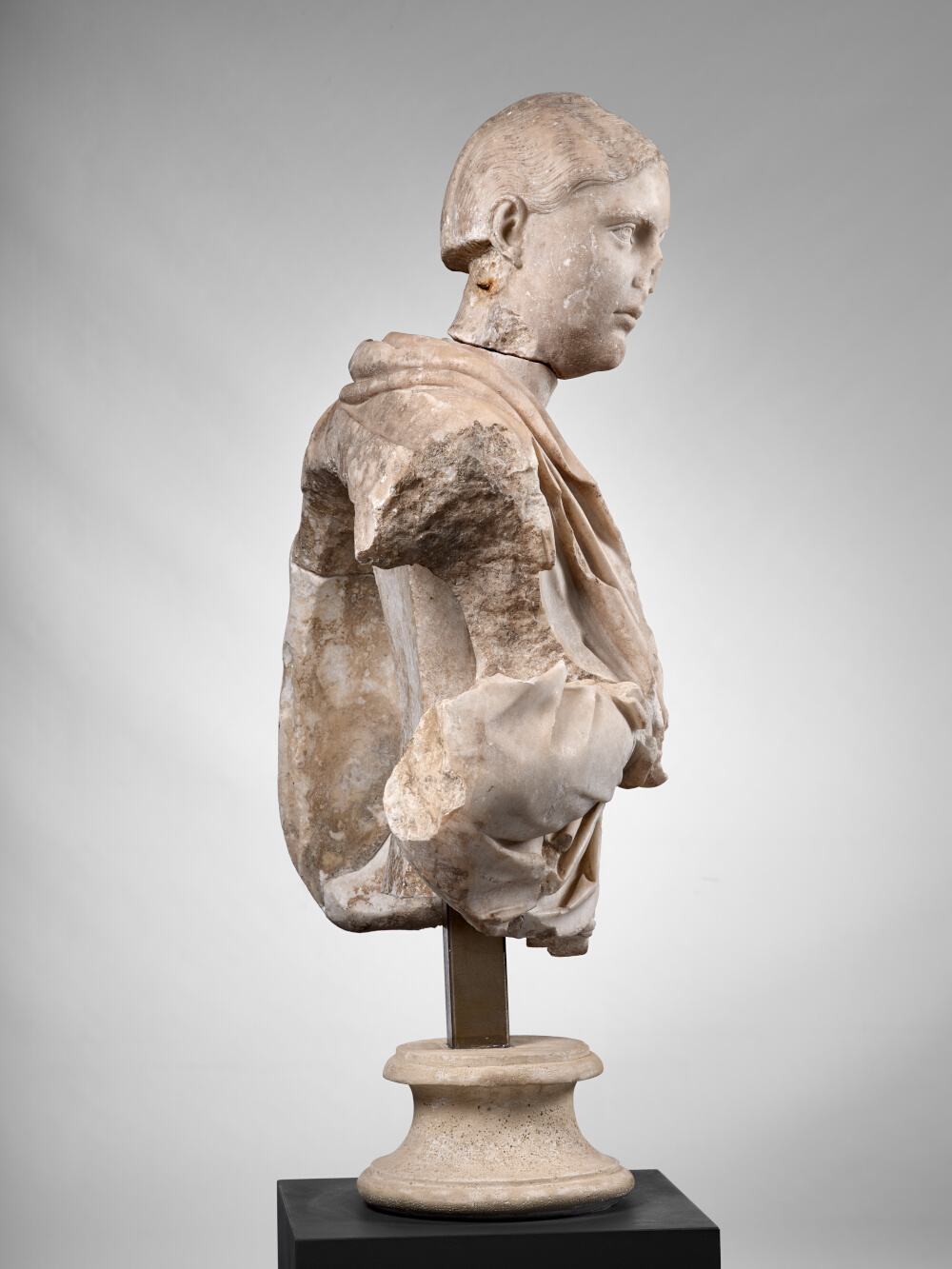
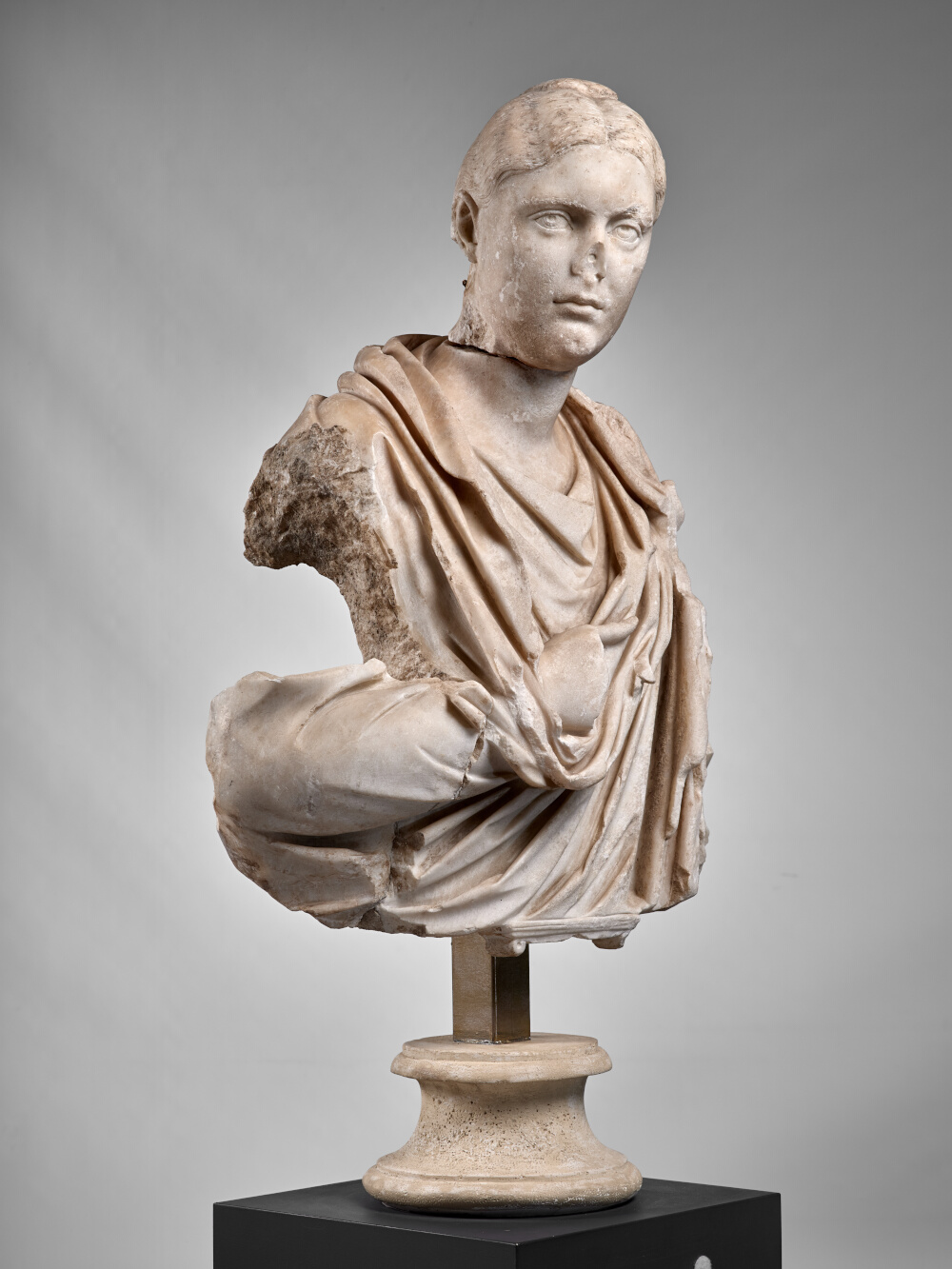
- Date de création
- Middle of the 3\rd\ century
- Material
- Göktepe marble, district 4 (Turkey)
- Dimensions
- H. 64,5 x l. 64 x P. 29 (cm)
- Inventory number
- Ra 74
- Photo credits
- Daniel Martin
This is one of the largest known female portraits in Roman art. The right hand holds a fold of the great mantle that covers the shoulders. At the back of the head, a flat braid has been brought up to the top of the skull, but the lower part of this chignon was carved separately and glued into place. According to German terminology, this is known as the « half-body bust » (Halbkörperbüste) type, as it is cut off at the waist. This process is rare in Roman sculpture, and did not appear until the reign of Gordian III (238-244), an emperor whose image, now displayed in the Louvre Museum, was depicted in the same way.
The head could be compared to a portrait kept in the Palazzo dei Conservatori in Rome (inv. 2689), which seems to represent the same figure, a member of the imperial family no doubt. The same hairstyle and profile can be found on the 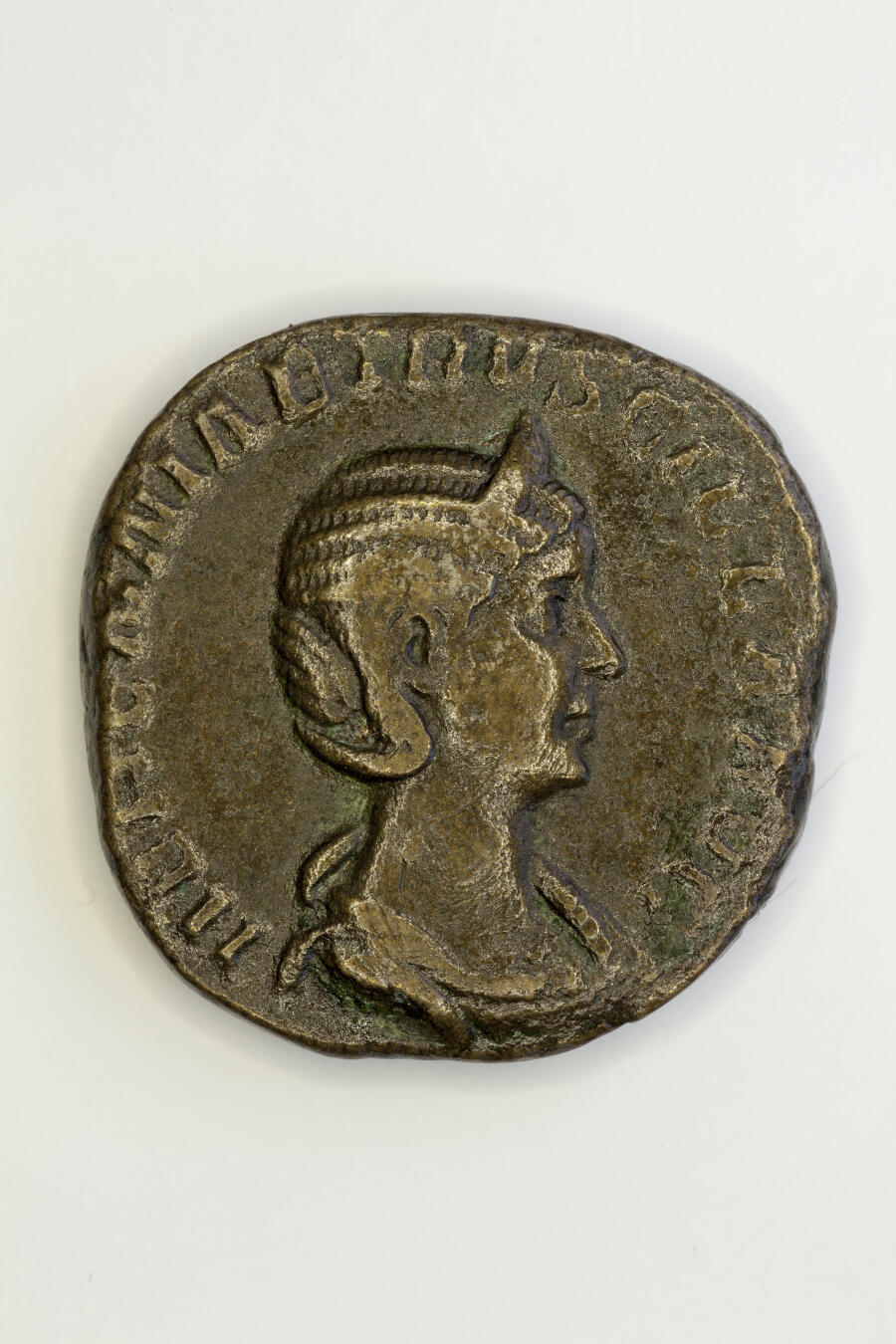 coins of Empress Herennia Etruscilla, spouse of Trajan Decius (249-251), now believed to be the woman portrayed here, rather than Cornelia Salonina, wife of Gallienus, or Plautilla, who was married to Caracalla, as previously suggested.
coins of Empress Herennia Etruscilla, spouse of Trajan Decius (249-251), now believed to be the woman portrayed here, rather than Cornelia Salonina, wife of Gallienus, or Plautilla, who was married to Caracalla, as previously suggested.
According to E. Rosso 2006, L’image de l’empereur en Gaule romaine, portraits et inscriptions, p. 484-486.
Bibliography
- Braemer 1999 F. Braemer, « Le culte impérial en Narbonnaise et dans les Alpes au Haut-Empire : documents sculptés, » Revue archéologique de Narbonnaise, 32, pp. 49–55. p. 53
- Cazes et al. 1999 D. Cazes, E. Ugaglia, V. Geneviève, L. Mouysset, J.-C. Arramond, Q. Cazes, Le Musée Saint-Raymond : musée des Antiques de Toulouse, Toulouse-Paris. p. 142
- Du Mège 1828 A. Du Mège, Notice des monumens antiques et des objets de sculpture moderne conservés dans le musée de Toulouse, Toulouse. p. 69, no 133
- Espérandieu 1908 É. Espérandieu, Recueil général des bas-reliefs de la Gaule romaine, 2. Aquitaine, Paris. p. 86-87, no 993
- Felletti Maj 1958 B.M. Felletti Maj, Iconografia romana imperiale da Severo Alessandro a M. Aurelio Carino (222-285 d. C.) (Quaderni e guide di archeologia), Rome. no 328, p. 240
- Joulin 1901 L. Joulin, Les établissements gallo-romains de la plaine de Martres-Tolosane, Paris. p. 339-340, pl. XXV, no 314
- Massendari 2006 J. Massendari, La Haute-Garonne : hormis le Comminges et Toulouse 31/1 (Carte archéologique de la Gaule), Paris. p. 246, fig 110
- Rosso 2006 E. Rosso, L’image de l’empereur en Gaule romaine : portraits et inscriptions (Archéologie et histoire de l’art), Paris. p. 484-486, no 235
- Saletti 1967 C. Saletti, Ritratti severiani, Rome. p. 39, no 29
- Wegner, Unger 1979 M. Wegner, R. Unger, « Verzeichnis der Kaiserbildnisse von Antoninus Pius bis Commodus, » Boreas. Münstersche Beiträge zur Archäologie, 2, pp. 87–181. p. 134
- Wiggers, Wegner 1971 H.B. Wiggers, M. Wegner, Caracalla, Geta Plautilla (Das römische Herrscherbild. 3. Abt), Berlin. p. 129
- Musée Saint-Raymond 1995 Musée Saint-Raymond, Le regard de Rome : portraits romains des musées de Mérida, Toulouse et Tarragona. Exhibition, Mérida, Museo nacional de arte romano ; Toulouse, Musée Saint-Raymond ; Tarragone, Museu nacional arqueològic de Tarragona, 1995, Toulouse. p. 155, no 110
To cite this notice
Capus P., "Portrait of Herennia Etruscilla (?)", in The sculptures of the roman villa of Chiragan, Toulouse, 2019, online <https://villachiragan.saintraymond.toulouse.fr/en/ark:/87276/a_ra_74>.